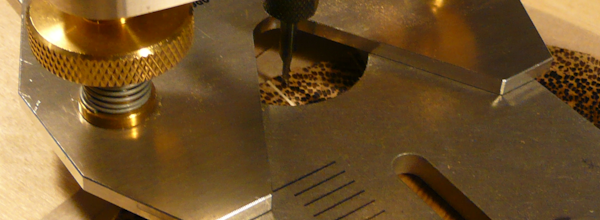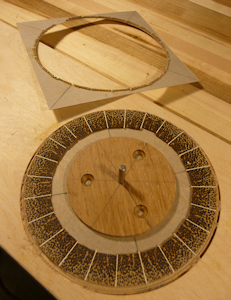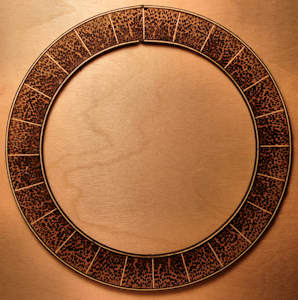Rosettes…

The sound hole on an acoustic guitar has a problem. Its edge is comprised of both edge and end grain, and end grain is very structurally weak. To avoid any future problems, the sound hole is reinforced, usually with a structure called a rosette. A rosette is, at its simplest, a ring of material that is inlaid into the top around the sound hole. On a smaller guitar, the top may be as thin as 3/32” requiring the rosette to be even thinner than that.
While the rosette serves a structural purpose, it can also be a decorative element where many instrument makers demonstrate their design and woodworking skills. Traditionally, mosaic marquetry is the rosette form for classic guitars, while rings of wood and other materials, such as pearl, are the prevalent form on steel string guitars.
There are many methods for creating rosettes, some tailored to creating multiple identical rosettes and others that are used to create a single rosette.
For the two guitars I am currently starting to build, one a 6 string jumbo and the other a 4 string tenor, I am using a simple method where a small router is used with a circle cutting jig to create a ring of material either from a solid piece of wood or from several small pieces of wood that have been shaped and then glued to each other as well as to a very thin base, in this case a 1/64” piece of plywood. After the ring is cut free, layers of a very thin colored wood, known as purfling, are glued to both the inside and outside of the ring; this adds both visual weight and interest. Then the rosette is uniformly thicknessed after which it is ready to be inlaid into the top.


